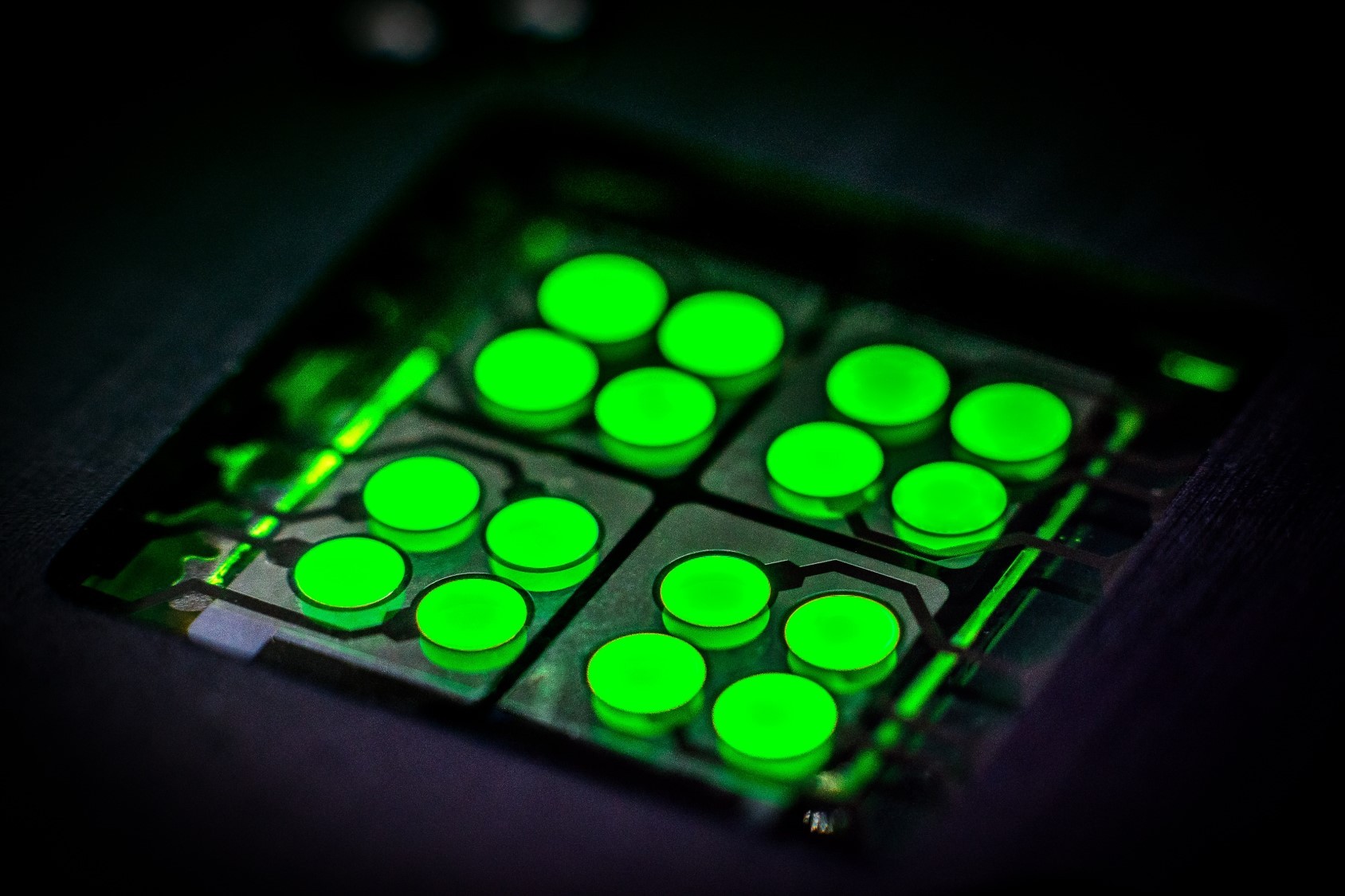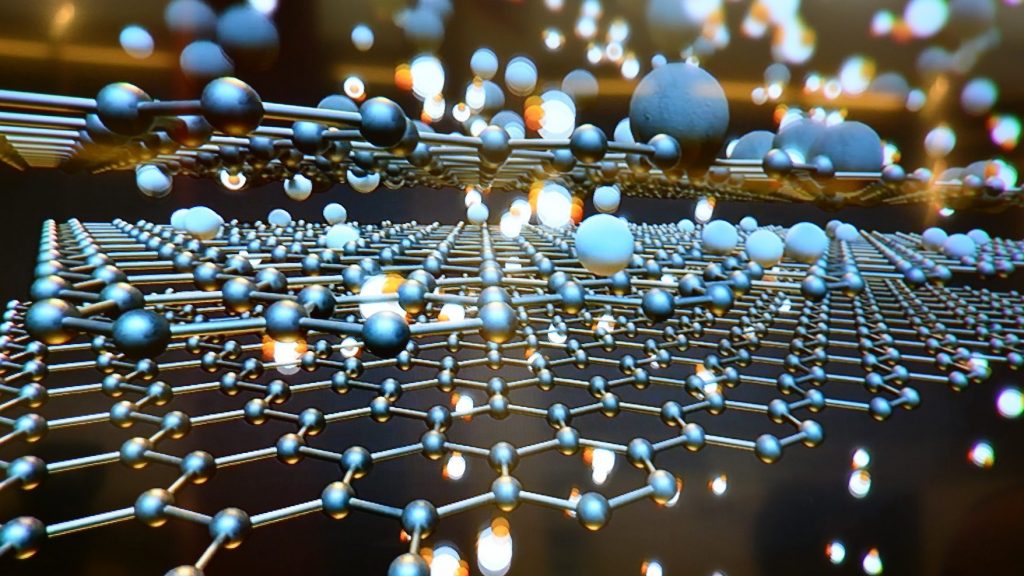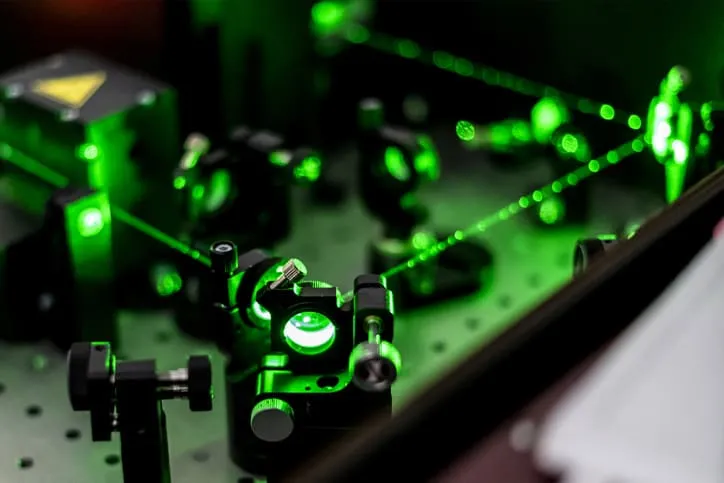Research
In the Rather group, we use advanced optical spectroscopic techniques to probe, understand and manipulate the functional properties of complex energy conversion systems ranging from organic photovoltaics to OLEDs, transitional metal complexes to low-dimensional materials for their utility in solar energy conversion, display technology, catalysis, quantum information and beyond. A brief overview of the research directions is below.
The Triplet Problem
A whopping 75% excitons in organic light emitting diodes (OLEDs) are in the triplet state and only 25% in the singlet. This is a major issue in the creation of an efficient OLED for display technology, as quantum mechanics prohibit those triplets to decay radiatively back to the ground state. Thus, 75% of electrons and holes injected into the device are wasted and limit the maximum internal quantum efficiency of the OLED to only 25%. A potential solution – leaving aside phosphorescence-based LEDs employing heavy metals – to enhance internal quantum efficiency and color purity of pixels in displays is offered by a new generation of organics that harvest the otherwise wasted triplets by exploiting a well-known phenomenon known as thermally-activated delayed fluorescence (TADF). We aim to explore TADF mechanisms that will enable design-specific control over such organics towards harvesting triplets efficiently.

The Hot Carrier Thermalization
Hot carrier solar cells (HCSCs) hold the promise of efficiency significantly greater than predicted by the Shockley-Queisser limit. It is a novel photovoltaic concept for exceeding single band gap limit by reducing thermalization loss, when the energy in excess of band gap is lost to the absorber material. Such losses can be recouped if the hot carries are harvested before they equilibrate with the lattice. Extracting hot carriers requires a clear understanding of the thermalization loss mechanisms in materials, which is challenging because these processes are extremely fast and occur on ultrafast timescales. We aim to investigate thermalization of photo generated carriers and the concomitant phonon dynamics in low-dimensional materials, capable of exhibiting slow thermalization losses, with high temporal and spectral resolution.
Madison C. Schwinn, Shahnawaz R. Rather, et al. J. Chem. Phys. 157, 184701 (2022)

Quantum Coherence and Decoherence
Decoherence of a quantum mechanical system is an inevitable fate. A chemical or material system can maintain coherence along a certain degree of freedom for a fleeting but measurable time until decoherence devours, and the system transitions into one of its classical binaries. In this research direction, we aim to investigate processes that exist as a superposition state for a measurable amount of time and then watch as it collapses into a localized state in order to get a molecular understanding of the quantum to classical transition and the factors that control such trajectories.
Shahnawaz R. Rather, et al. Nature Chemistry, 13, 70-76 (2021)
Yusuke Yoneda, et al. J. Am. Chem. Soc. 143, 14511-14522 (2021)
Shahnawaz R. Rather, et al. J. Am. Chem. Soc., 141, 708-722 (2019)

Ultrafast Laser Spectroscopy
To perform research in the above directions, we implement state-of-the-art electronic spectroscopy tool kit consisting of ultrafast transient absorption and multidimensional electronic spectroscopy techniques that employ sub-10 femtosecond laser pulses to time processes and reveal unforeseen dynamics in excited states. In particular, we use broadband laser pulses for instantaneous excitation. A key consequence of instantaneous broadband excitation is that the ensemble of chromophores is locked in-step, as if all the entities in the ensemble are evolving in unison. That way, we are able to probe properties intrinsic to the photoactive molecules and materials, which would otherwise be obscured by ensemble averaging.
Shahnawaz R. Rather, et al. Chem, 5, 402-416 (2019)
Shahnawaz R. Rather, et al. J. Am. Chem. Soc., 140, 6298-6307 (2018)
Shahnawaz R. Rather, et al. J. Phys. Chem. A, 120, 6792-6799 (2016)
